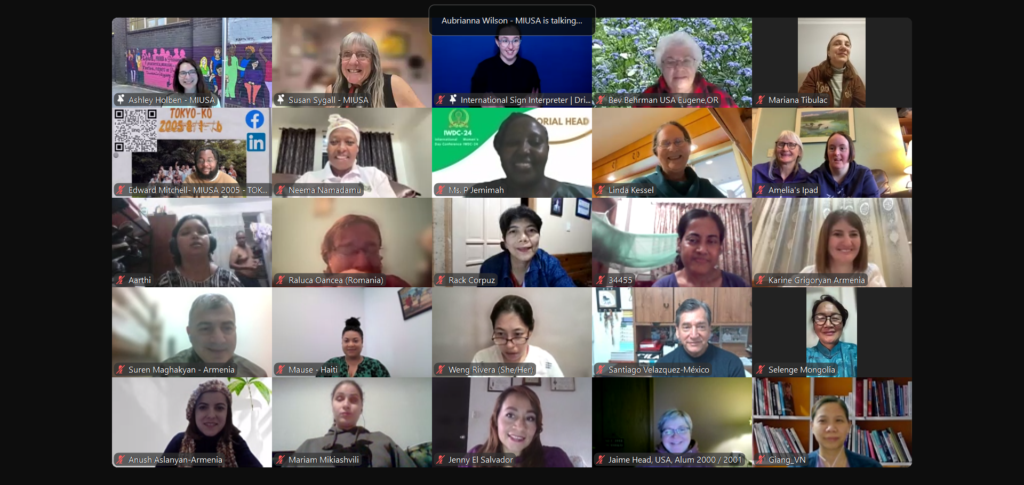“We don’t send volunteers with disabilities to our overseas sites if our partners aren’t ready for them.”
“We never allow our students with disabilities to study in a country with less than equal standards of accessibility!”
“We don’t have the capacity to accommodate students with disabilities at our ESL center.”
“We don’t want to set someone up for a bad experience.”
On the surface, these statements are well-intentioned. People who make the commitment to participate in a volunteer abroad, study abroad or foreign language program often invest considerable time and money in doing so, expecting that their time abroad will provide high returns on their investment. So of course a program would want to live up to those expectations, rather than to be a source of disappointment and frustration (and a target for negative reviews).
However, refusing to accept a participant with a disability on a program because that program “can’t guarantee accessibility” closes a lot of doors, not only to the disabled applicant, but also to the other participants of the program and to the host community or classroom.
The problem with this can be likened to the chicken and the egg paradox.
If people with disabilities simply waited around for international exchange experiences – volunteer abroad, study abroad, ESL classrooms, and more – to become accessible to them, well… they might find themselves waiting for a long time. Until they start infiltrating these programs and put a little pressure on them, then what incentive do the programs have to design, plan, or budget for access and inclusion?
The more that people with disabilities pursue international exchange programs, the more exchange organizations will recognize the importance of ensuring accessibility into their programs from the start.
When you reach out to an exchange organization or ESL center, be assertive and focus on your goals and qualifications. Instead of asking, “Can I participate in any of your programs given my disability?” try “I want to go somewhere that will allow me to use my three years of French and build on my coursework in international development. Do you have any programs that would fit my interests?”
If there’s a program that would be a great fit for you, don’t be so quick to let that program off the hook if it claims it can’t accommodate people with disabilities. Ask questions like, “What are you going to do to change that?” or “What are some of the essential requirements of participating in the program?” If you suspect the program is making assumptions about what accommodations you will need, suggest, “Your idea of accessibility might be a bit different from mine. Let’s talk more about this.” As always, you can also suggest that they reach out to the National Clearinghouse and Disability and Exchange (NCDE) team for resources and referrals.
In the end you may decide that you don’t want to pursue a program that isn’t experienced with or at least willing to explore accessibility; not everyone wants to be or has to be a trail-blazer, and only you can decide when to choose your battles or whether to seek out legal counsel if you feel you are being discriminated against.
If you do proceed with participating in the program, know that the road ahead may be bumpy and require your initiative, patience, flexibility, persuasiveness and persistence, but the pay-off may be well worth it. Give regular feedback on how the program is handling accessibility well and how it can improve.
Before assuming that one of your sites abroad or one of your ESL centers can’t accommodate a disabled participant, hear the person out. What are they trying to get out of the experience, and what do they need in order to achieve that? Are they willing to explore other methods for access if their preferred method falls through (e.g. accepting assistance from other participants instead of bringing their service dog, etc.)?
If you find yourself telling qualified applicants with disabilities that your overseas partners are the ones reluctant to accept them, you’re overdue for a conversation with those partners about your organization’s commitment to welcome diverse participants. As you enter into agreements, communicate your expectations for how your partners will facilitate access, whether it’s by:
Also, don’t underestimate your overseas site; there may be ways a placement can accommodate a person with a disability that you wouldn’t know was available or possible until someone starts researching.
Whether you’re embarking on a program with little disability experience, or you’re exploring how to include a participant with a disability, don’t let fear of failure get in the way. It’s better to risk getting a bit of “egg” on your face than to be too “chicken” to try.
Photo by 16:9clue from Flickr Creative Commons
Sign up for our E-News






Manage Your Privacy